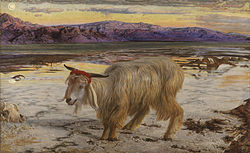
This is a list of paintings produced by members of the Pre-Raphaelite Brotherhood and other artists associated with the Pre-Raphaelite style. The term "Pre-Raphaelite" is used here in a loose and inclusive fashion.
Contents
- PRB members
- James Collinson
- William Holman Hunt
- John Everett Millais
- Dante Gabriel Rossetti
- Other major artists
- Lawrence Alma-Tadema
- Ford Madox Brown
- Edward Burne-Jones
- Arthur Hughes
- Sir Edward John Poynter
- Associated artists
- George Price Boyce
- John Brett
- James Campbell
- John Collier
- Charles Allston Collins
- Frank Cadogan Cowper
- William Davis
- Walter Howell Deverell
- Frank Bernard Dicksee
- William Gale
- John William Godward
- Thomas Cooper Gotch
- Edward Robert Hughes
- John William Inchbold
- John Lee
- Edmund Leighton
- Frederic Leighton
- Evelyn De Morgan
- Joseph Noel Paton
- Frederick Sandys
- Thomas Seddon
- Simeon Solomon
- John Roddam Spencer Stanhope
- Marie Spartali Stillman
- John Melhuish Strudwick
- John William Waterhouse
- Daniel Alexander Williamson
- William Lindsay Windus
- References
- External links
















